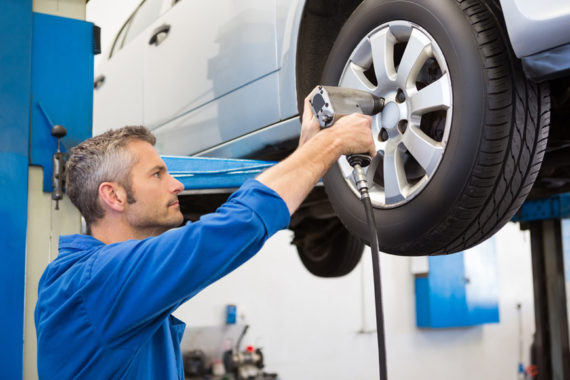From the brake pedal to hydraulic brake fluid, brake master cylinder to power brake booster, drum brakes to disc brakes and electronic anti-lock brake sensors, Motronix technicians know every part of your brake system inside and out and can perform brake repair on any make and model.
BRAKE REPAIR
BRIEF DESCRIPTION
BRAKE WARNING SIGNS
| You know you need brake repair when: |
| The brake dashboard light glows amber |
| Indicating problems with the anti-lock brake system (ABS) the brake dashboard light is red |
| Indicating a system imbalance the brake pedal is spongy or slow to respond you hear grinding or constant squealing during braking |
SCOPE OF WORK
Your vehicle’s brake system has one job – to stop your vehicle. But it takes several key components to deliver that singular end result. To bring a vehicle to a halt, three things are necessary: leverage, hydraulic force and friction. Leverage is supplied by the driver’s leg pressure and the brake pedal. The pedal is connected by levers and rods to the back of the power booster. The power booster uses either engine vacuum or a hydraulic pump to multiply and transfer the force of that leverage to the master cylinder. The master cylinder is the heart of your vehicle’s brake hydraulic system. It uses applied leverage to force a reservoir full of brake fluid through valves, steel lines and rubber hoses into hydraulic calipers and wheel cylinders. That hydraulic pressure is then used to help create friction.
For example, disc brakes use a hydraulic caliper fitted with brake pads to grab a spinning disc (or rotor). Drum brakes, on the other hand, have a hydraulic wheel cylinder that pushes a brake shoe against the inside of a spinning drum. Either design involves highly engineered parts and precise movement. The more force a driver applies to the brake pedal, the greater the stopping force that is applied at the wheels.
In addition to this primary braking system, most of today’s vehicles utilize an electronic Anti-lock Brake System. Using electronic sensors and high pressure pumps, under certain conditions, your ABS system can measure vehicle speed, wheel slip and brake force. Then it actually pumps the brakes for you during an emergency stop.
That’s why it’s essential to be proactive about testing overall brake components. And to know whether a brake component needs simply to be serviced or totally replaced.
- We make auto repair more convenient for you
- We are a friendly and professional group of people
- We handle a wide range of car services
- Same day service for most repairs and maintenance
- We get the job done right — the first time
There are common brake problems with common, well-known signs, such as a shaky steering wheel or a squeaky sound and we’ve all been there and know that’s an indicator for checking your brakes. However, there are many other – probably less obvious – signs your brakes may be showing which you don’t want to ignore.
Get a brake service inspection if:
- The brake pedal seems to be spongy or presses farther to the floor than usual
- Your vehicle pulls to the right or left when you brake
- Unusual noises or vibrations occur during braking
- You have grinding, squeaking or squealing brakes
- Your steering wheel is shaking
- Your car is wobbling or pulsating when you drive at highway speeds
- It’s been over a year or 12,000 miles since the last time your brakes were inspected
- You’re near or past the number of miles your vehicle’s manufacturer recommends between brake fluid exchanges
- The brake warning light on your dashboard comes on and stays on
- Your vehicle requires longer distances to stop than it used to
- The brake pedal responds slowly
- The brake pedal requires excess pressure
Many brake pads today have a built-in metal component that creates a slight squeal. The squeal increases in volume over time to alert you of the need for service. If you begin to hear a loud squeal, make sure to bring your vehicle to shop for a full, inspection.
- We make auto repair more convenient for you
- We are a friendly and professional group of people
- We handle a wide range of car services
- Same day service for most repairs and maintenance
- We get the job done right — the first time





